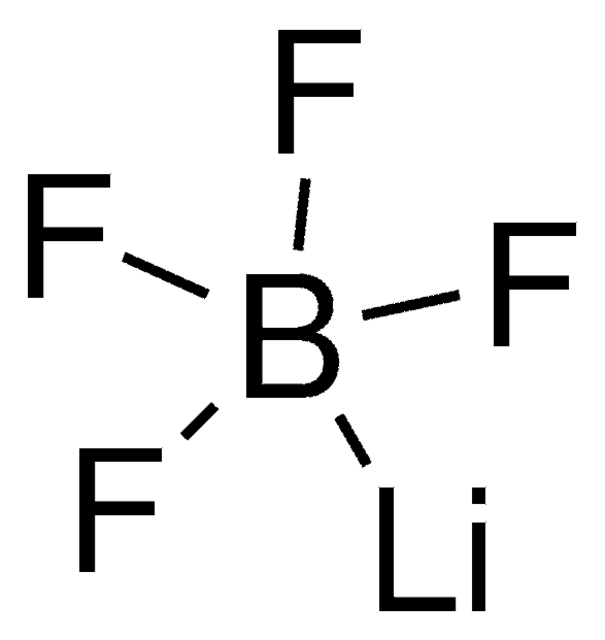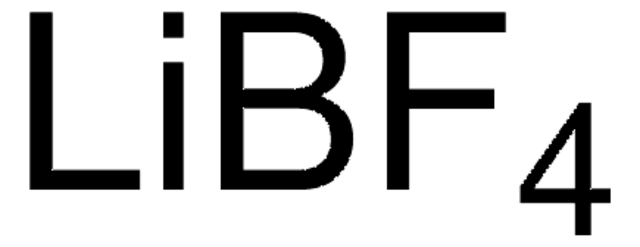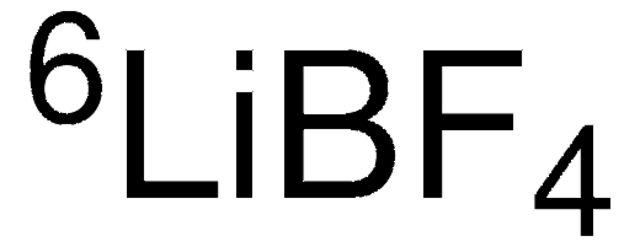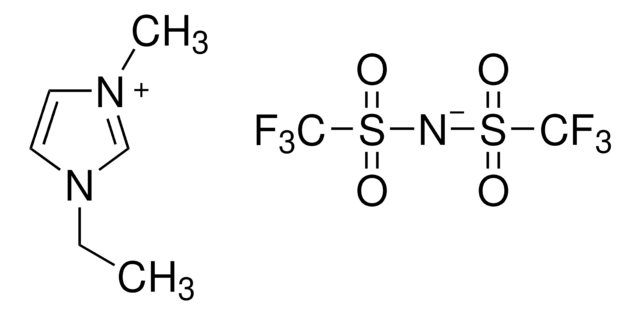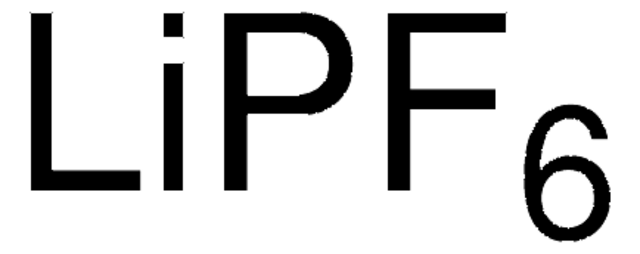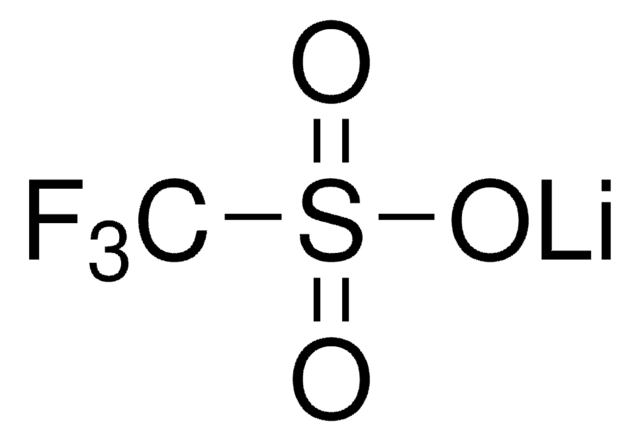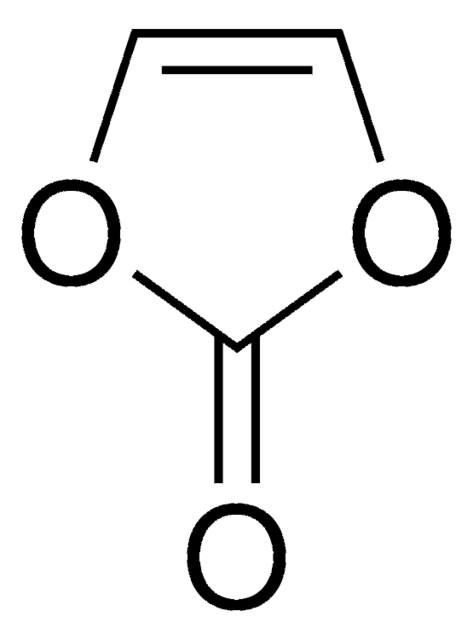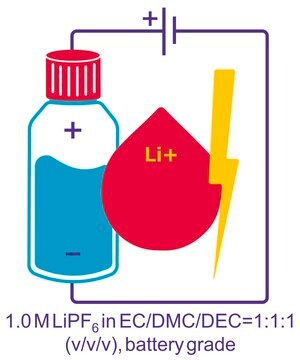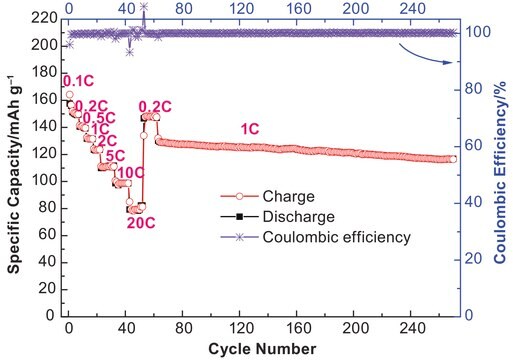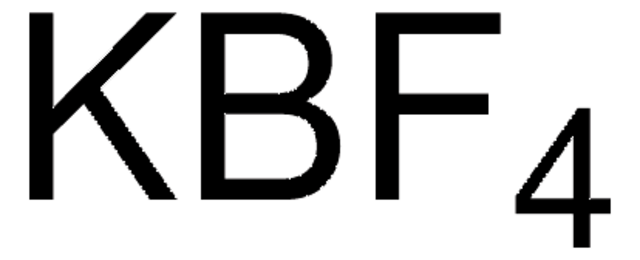901695
Lithium tetrafluoroborate
≥98%, acid <200 ppm, anhydrous
Sinónimos:
Lithium borofluoride, Lithium fluoroborate
About This Item
Productos recomendados
grado
anhydrous
Ensayo
≥98%
Formulario
powder
mp
293-300 °C (dec.) (lit.)
aplicaciones
battery manufacturing
cadena SMILES
[Li+].F[B-](F)(F)F
InChI
1S/BF4.Li/c2-1(3,4)5;/q-1;+1
Clave InChI
UFXJWFBILHTTET-UHFFFAOYSA-N
¿Está buscando productos similares? Visita Guía de comparación de productos
Descripción general
Aplicación
Precaución
- These electrolyte solutions have extremely low water content; Please handle under inert and moisture free environment (glove box).
- Keep away from heat, sparks and flame. Avoid moisture, strong acid, strong alkalis, and oxidizing agents. Avoid skin and eye contact from product. Highly toxic and corrosive gases (HF) are generated by reaction with moisture os use only under inert gas atmosphere.
- Please handle under inert and moisture free environment.
Storage:
Keep containers away from heat, humidity, direct sunlight and ignition source. Keep containers tightly closed in a cool dry and well-ventilated place. Do not store with strong oxidizing agents.
Información legal
Producto relacionado
Palabra de señalización
Danger
Frases de peligro
Clasificaciones de peligro
Acute Tox. 4 Oral - Eye Dam. 1 - Muta. 2 - Skin Corr. 1B
Código de clase de almacenamiento
8B - Non-combustible corrosive hazardous materials
Clase de riesgo para el agua (WGK)
WGK 3
Punto de inflamabilidad (°F)
Not applicable
Punto de inflamabilidad (°C)
Not applicable
Elija entre una de las versiones más recientes:
Certificados de análisis (COA)
¿No ve la versión correcta?
Si necesita una versión concreta, puede buscar un certificado específico por el número de lote.
¿Ya tiene este producto?
Encuentre la documentación para los productos que ha comprado recientemente en la Biblioteca de documentos.
Los clientes también vieron
Nuestro equipo de científicos tiene experiencia en todas las áreas de investigación: Ciencias de la vida, Ciencia de los materiales, Síntesis química, Cromatografía, Analítica y muchas otras.
Póngase en contacto con el Servicio técnico